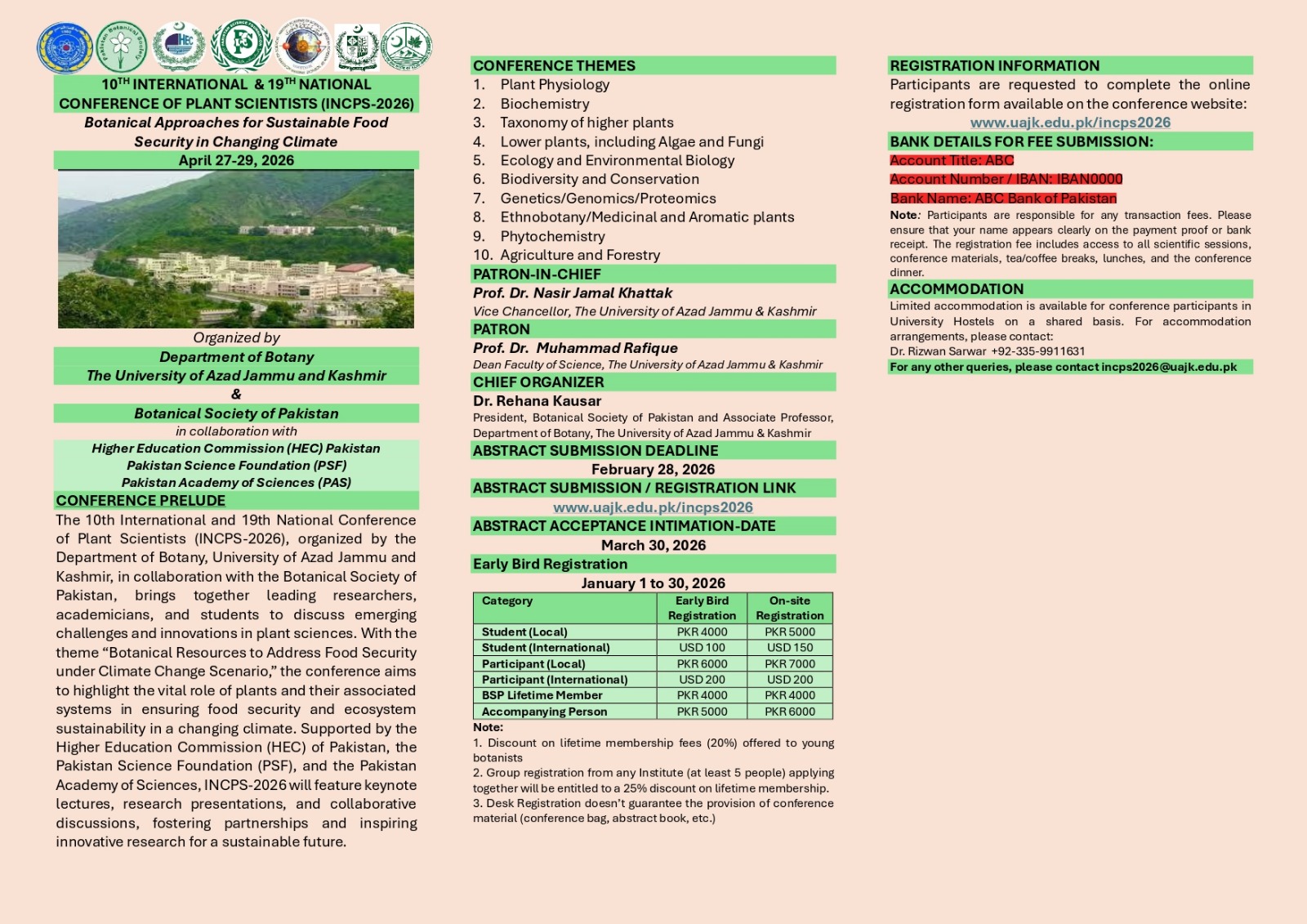
PJB-2017-528
QUANTITATIVE RESPONSE OF SESAME TO MICRONUTRIENTS (Zn, Mn & B) AND ENVIRONMENT
Meer Muhammad Khan
Abstract
Application of microelement fertilizers increases crop yield and can increase plant resistance to environmental stresses that contribute to potential yield. To evaluate the role of micronutrients and the environment, field experiments were carried out in three different locations (BARI, URF and NARC) of the Pothwar region of Pakistan using four sesame cultivars (SG-30, TS-3, TS-5 and TH-6) and four micronutrient treatments (control, Zn, B and Mn) during 2014 and 2015 in a randomized complete block design with split plot arrangement having four replicates. The results revealed significant variations for the main effects of all factors studied. Maximum mean values of capsules plant-1, biological yield and seed yield were noted for cv. SG-30, while the cv. TH-6 was the lowest for these parameters. Maximum mean values of capsule length, capsule weight, seeds capsules-1 and weight of 1000 seeds were recorded for cv. TH-6 but vice versa for cv. SG - 30. The application of micronutrients (Zn, Mn and B) significantly increased all yield attributes over the control. The mean maximum length of the capsule, capsules plant-1 and Seeds capsule-1 were observed in the area of higher precipitation (NARC), while other sites with lower precipitation (URF and BARI) produced higher yield. The interactive effect of cultivar x location x year was highly significant for all traits studied except capsule length. Sesame cultivars revealed a differential response for all traits at three sites during both years. It can be concluded that micronutrient application ZnSO4 @ 10 kg ha-1, Borax @ 10 kg ha-1 and MnSO4 @ 5 kg ha-1 would increase yield and yield attributing traits in medium precipitation areas that the suitable cultivar is designated.
To Cite this article:

